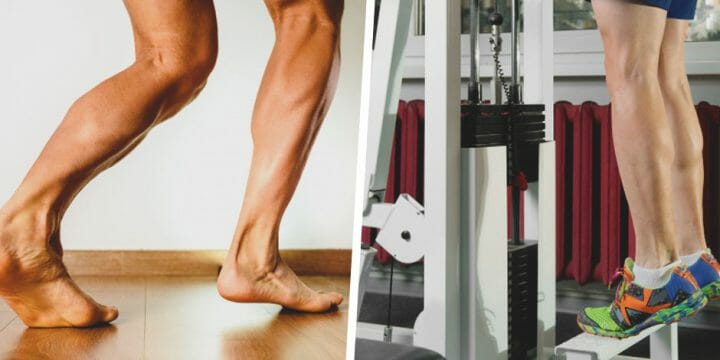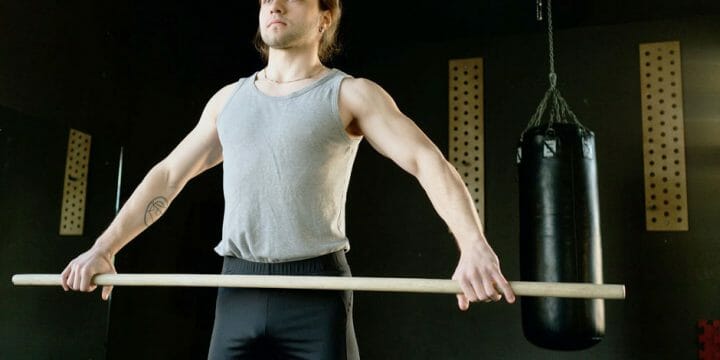The erector spinae muscle group is possibly one of the most underrated parts of the human body, and many amateur athletes don’t pay anywhere near enough attention to these critical core muscles.
So, I decided to spend a few days at the gym with a few other strength coaches to come up with a clear list of exercises that will help you strengthen the erector spinae and round up your core workouts.
I also had a physician provide some information on why these muscles are important, so let’s dive right in.
Quick Summary
- The 9 best erector spinae exercises are deadlifts, back extensions, bent-over rows, good mornings, rack pulls, bird dogs, Superman, standing Superman, and kettlebell swings.
- These exercises offer a diverse approach to strengthening the erector spinae, each targeting the muscles differently for improved posture and core strength.
- Strong erector spinae muscles are crucial for spinal support and stability, as highlighted by Joint Chiropractic.
- In my opinion, consistently training the erector spinae is key to a strong, well-balanced physique, greatly enhancing both athletic performance and everyday activities.
How Do You Get Bigger Spinal Erectors?
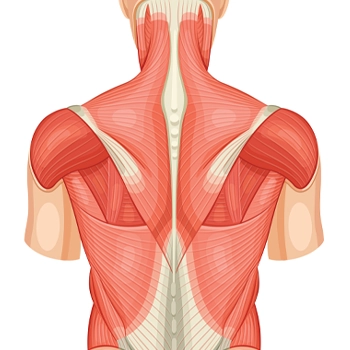
You get bigger spinal erectors by choosing one of around ten core workouts that fully engage this part of your core. In my experience, choosing specific core workouts that target the spinal erectors has been key to their development.
It often surprises people to hear that the erector spinae muscles in your back are actually part of your core muscles [1].
Many might not realize the importance of specifically targeting the erector spinae muscles, often assuming regular back exercises are sufficient.
However, effectively strengthening these muscles usually involves focused compound exercises, according to the Columbia Association [2]. These involve multiple joints moving and multiple muscle groups being engaged.
The important thing to keep in mind for such exercises is that a smooth and slow motion will achieve far greater results.
Emphasizing correct technique and safety is crucial, particularly for exercises like deadlifts and back extensions, where improper form can lead to injury.
Best Erector Spinae Strengthening Exercises

From my coaching experience, here are the exercises I've found most effective for strengthening the erector spinae.
What I would suggest you do is choose three of these for each core or back workout day. Also, make sure you switch them around a bit, as variety will go a long way toward beating boredom.
1. Deadlifts (3 sets of 6 to 10 reps)
For most people who are relatively new to this exercise, I would recommend the conventional deadlift rather than a stiff leg deadlift. As a coach, I've seen beginners benefit more from conventional deadlifts than stiff leg variants.
This involves setting up a barbell right in front of you with your feet shoulder-width apart. Then, while slightly bending your knees, reach down to the barbell.
Pull the bar up until you’re standing tall, and then lower it slowly while keeping your spine straight.
The stiff-legged deadlift involves doing the same but without the bend in your knees. These are a lot tougher on your lumbar spine, so I would suggest reducing the weight load.
 2. Back Extensions (3 sets of 15 to 20 reps)
2. Back Extensions (3 sets of 15 to 20 reps)
This is a great exercise that almost isolates your erector spinae, but you’ll also feel these add some strain to your glutes.
You’ll need a back extension machine for this, and I wouldn’t try to create something at home with chairs and weights.
There has been a significant increase in home gym workout injuries, and you don’t want to be one of those statistics [3].
In back extensions, lean forward until your thighs touch the pad, ensuring foot stability.
Lower your upper body, maintaining a straight spine. As you lift, engage the erector spinae and glutes.
Related: What is Back Hypertension?
3. Bent Over Rows (3 sets of 6 to 10 reps)
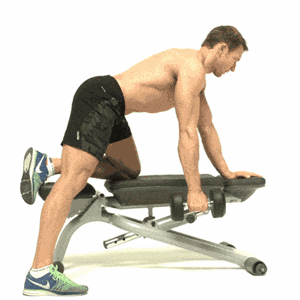
Switch from seated rows to single-arm bent-over rows with a dumbbell to effectively engage the spinal erectors.
Start by stepping forward with one leg, bending the knee, and keeping your spine neutral as you lift the dumbbell.
This exercise not only works the erector spinae but also involves the shoulder and arm muscles.
 4. Good Mornings (3 sets of 8 to 12 reps)
4. Good Mornings (3 sets of 8 to 12 reps)
These are another great choice for spinal erector exercises, and they are a variation of a deadlift.
Having coached many, I find good mornings to be an excellent variation for targeting spinal erectors.
Good mornings involve balancing a barbell on your shoulders.
Begin as you would for a squat, then hinge forward at the hips until parallel with the floor, and return to the starting position.
Start with a lighter weight to get accustomed to the balance and movement.
5. Rack Pulls (3 sets of 6 to 10 reps)

The rack pull is an excellent alternative to Romanian or sumo deadlifts, especially for beginners or those with mobility issues.
Set the barbell on a rack about a foot high.
Begin with a slight knee bend, grasp the barbell, and engage your core and erector spinae as you stand.
Maintain a neutral spine throughout to avoid undue pressure on the discs.
 6. Bird Dogs (3 sets of 6 to 10 reps)
6. Bird Dogs (3 sets of 6 to 10 reps)
The bird dog is a type of Pilates exercise that is great for the spinal erectors. In my training sessions, bird dogs have been highly effective in strengthening spinal erectors.
It’s an excellent choice if you don’t have weights at home or if you’ve recently had a back injury that requires strengthening the erector spinae.
Set yourself up with an exercise mat and get on your hands and knees.
Lift your right arm off the ground and stretch it out in front of you. At the same time, lift your left leg off the ground and hold the posture for a second or two.
Then lower back down again and switch to your right leg and left arm. As you get stronger, you should be able to increase your range of motion and hold the top of the movement for longer.
7. Superman (3 sets of 5 to 8 reps)
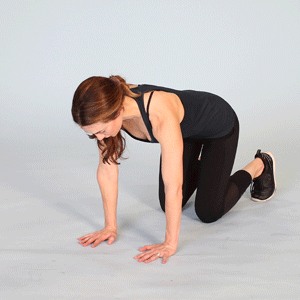
Another pilates move for the spinal erectors is the Superman exercise.
Start by lying face down on a mat with your arms extended. Raise both arms and legs, aiming to lift your thighs off the ground.
This activates the erector spinae. Hold for five seconds before releasing. Despite seeming simple, it's an effective workout for these muscles.
 8. Standing Superman (3 sets of 6 to 10 reps)
8. Standing Superman (3 sets of 6 to 10 reps)
For an easier alternative to the Superman exercise, try the standing version.
Stand with your feet hip-width apart, lift one leg straight behind you, and simultaneously lean forward, reaching the opposite arm ahead.
This variation helps engage the erector spinae without the intensity of the full Superman pose.
You will need to focus on your balance a bit, but it’s a great way to fully engage your erector spinae and hold the tension for longer, according to The Journal of Physiology [4].
“Time under tension (TUT) refers to the amount of time a muscle is held under tension or strain during an exercise set.”
- Gregory Minnis, DPT
9. Kettlebell Swings (3 sets of max reps)
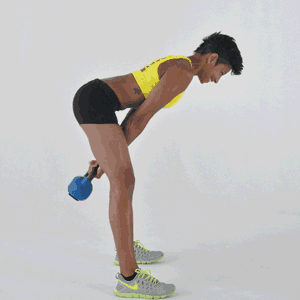
From what I've seen, kettlebell swings are tremendously effective for activating the erector spinae.
Stand with feet wider than hip-width, and swing a kettlebell from between your legs to above your head.
This exercise engages the erector spinae through hip thrusts and helps increase your heart rate. Aim for numerous reps for maximum engagement.
What Are The Erector Spinae Muscles?

Through years of coaching, I've taught many that the erector spinae muscles are a group of muscles that run parallel to your spine from the top of your buttocks to about the top of your back.
They are very long muscles, and there are three of them on each side of your spine [5].
The erector spinae are called:
- Iliocostalis
- Longissimus
- Spinalis
The erector spinae plays a very critical role in keeping your upper body straight while sitting and standing.
“The function of the spinal erectors is to move the vertebral column. Bilateral contraction of these muscles extends the spine, while unilateral contraction causes lateral flexion.”
- Jana Vasković, MD
The interesting thing is how these back muscles work not only to support your whole upper body but also to provide a strong foundation for a wide range of other exercises.
See, when your erector spinae are strong, they provide a huge amount of support and stability for the spine, according to The Joint Chiropractic [6].
And that stability will mean you can do heavier training for your upper back, shoulders, and even legs.
You’ll be surprised at how much easier it will be to squat a heavier load when your back doesn’t feel like it’s going to give way because your erector spinae aren’t strong enough.
Related Articles:
How Often Should You Train These Muscles?

It's advisable to train the erector spinae muscles weekly, either integrated into your back workout day or as a separate core session.
Generally, incorporating three of the mentioned exercises into your routine is effective.
Pilates-style exercises can be done more frequently, even at home.
Personally, I include them in my morning stretching routine, combining yoga and pilates, to prepare my body for the day.
Why Do These Muscles Get Weak?
I've observed that weak spinal erectors typically stem from long hours of desk work and incorrect posture.
This can lead to erector spinae pain, further affecting posture and muscle strength.
Addressing this early through targeted exercises is key to preventing long-term pain and complications.
Strengthening the erector spinae is not only beneficial for enhancing fitness but also plays a vital role in injury prevention and rehabilitation, especially for athletes and individuals involved in activities requiring extensive back strength and stability.
FAQs
Do Deadlifts Work The Erector Spinae?
Yes, deadlifts work the erector spinae. Anything from sumo deadlifts to Romanian deadlifts can have a great impact on gradually strengthening these muscles. While they aren’t isolation exercises, they allow you to do compound movements with heavy weights.
What Happens When Your Erector Spinae Is Weak?
When your erector spinae is weak, you’ll find that your posture suffers while you’re sitting and standing. Weak erector spinae also have a negative impact on your ability to do other exercises like squats.
References:
- https://www.physio-pedia.com/Erector_Spinae
- https://columbiaassociation.org/gyms-fitness/what-are-compound-exercises/
- https://www.wsj.com/articles/at-home-exercise-injuries-are-skyrocketing-heres-how-to-stay-safe-11633533025
- https://www.ncbi.nlm.nih.gov/pmc/articles/PMC3285070/
- https://www.kenhub.com/en/library/anatomy/erector-spinae-muscles
- https://www.thejoint.com/arizona/peoria/park-west-48028/272420-3-reasons-you-need-to-strengthen-your-back
About The Author
You May Also Like

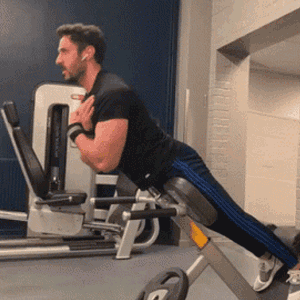 2. Back Extensions (3 sets of 15 to 20 reps)
2. Back Extensions (3 sets of 15 to 20 reps)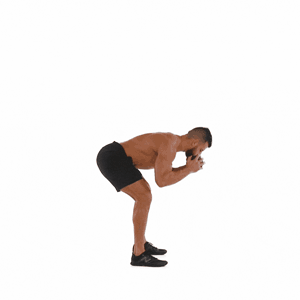 4. Good Mornings (3 sets of 8 to 12 reps)
4. Good Mornings (3 sets of 8 to 12 reps)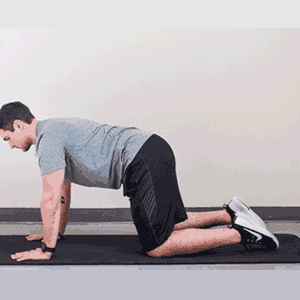 6. Bird Dogs (3 sets of 6 to 10 reps)
6. Bird Dogs (3 sets of 6 to 10 reps)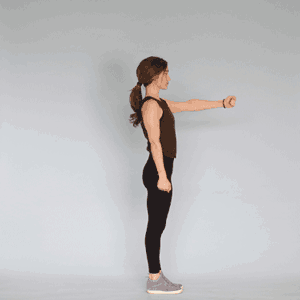 8. Standing Superman (3 sets of 6 to 10 reps)
8. Standing Superman (3 sets of 6 to 10 reps)